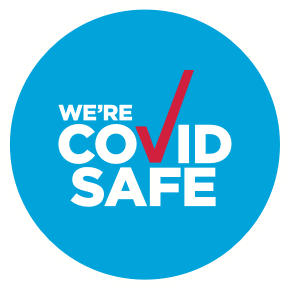6 Common CPAP Mask Problems and How to Reduce the Discomforts
CPAP therapy which utilises a CPAP (Continuous Positive Airway Pressure) machine, is an excellent therapeutic option for people with sleep apnea who want to lessen the disorder’s most severe symptoms. But like all other treatments, there are adverse side effects, so how do you reduce these discomforts?
A CPAP machine works by delivering consistent and stable air pressure through a hose linked to a mask or nosepiece while you sleep. A leaky mask, difficulty settling asleep, a stuffy nose, and a dry mouth are all common CPAP issues.
According to current CPAP mask manufacturer studies, the CPAP compliance rate, which refers to the percentage of CPAP patients who use the mask for more than a few months, is only around 60%!
One reason for this low number is that many users find it difficult to sleep with a CPAP mask on their faces all night. However, there are simple solutions that might enhance you or your patients’ compliance rates!
As a leading CPAP manufacturing company, here are the top six most common CPAP problems we see most with patients and the most successful treatments to ensure the best nightly treatment results.
- Poorly Fitting CPAP Mask
Ensure you have a correctly fitting CPAP mask by working closely with your health care practitioner and CPAP mask manufacturer. Because everyone’s face is different, one person’s ideal mask style and size may not work for you.
It’s important to note that CPAP masks come in various styles and sizes, so do not be discouraged from trying a new style or medical textile if your current mask is uncomfortable. Full face masks, for example, cover your lips and nose and have straps that wrap across your forehead and cheeks. These may cause claustrophobia in some people, but they work well if you like to sleep breathing through your lips and provide a secure fit if you move around a lot while sleeping.
If you wear glasses or read while wearing a mask, nasal pillows that fit beneath your nose and straps may be a good option because they don’t impede your vision as much as full-face masks. But if you move around a lot in your sleep or sleep on your side, this mask type may not be for you.
To achieve the optimum fit, ask your doctor or CPAP manufacturing company to show you how to adjust your mask. Product instructions from the CPAP mask manufacturer might potentially show you how to achieve this, as a properly fitted mask should not be painful or unpleasant!
- Having Difficulty Getting Comfortable to Using a CPAP Mask
As a reputable CPAP mask manufacturer, we often suggest to clients that to begin, try sleeping with just the CPAP mask on for small amounts of time while awake, such as while watching TV. Then, when you’re awake, try wearing the mask and hose with the machine switched on during the day.
Start using the CPAP machine every time you sleep, even during naps, after you’ve become used to how it feels. Using the CPAP machine only once in a while may cause you to take longer to become used to it. Instead, stick with it for at least a few weeks to see if your mask and pressure are the correct fit for you.
- I Can’t Tolerate the Forced Air from the CPAP Mask
You might be able to get around this by utilising a machine that has a “ramp” function. This option allows you to begin with a low air pressure level. Then, as you fall asleep, the machine gradually and automatically raises the air pressure to the specified level, and your doctor can adjust the rate.
If this function doesn’t help, talk to your doctor or CPAP manufacturing company about switching to a machine that changes the pressure automatically and continuously while you sleep. A bi-level positive airway pressure (BPAP) machine, for example, gives greater pressure when you inhale and less pressure when you exhale (exhale).
- My Mask Causes My Nose to Get Stuffy or Dry
When exposed to the air flowing from the CPAP mask, some persons on CPAP therapy may develop nasal and sinus difficulties, such as a dry or congested nose. With most CPAP devices, a heated humidifier device is now integrated or available as an optional extra, which boosts the moisture levels in the air, helping to minimise, if not eliminate, dryness in your airways.
- Do You Get a Claustrophobic Feeling?
It’s probable that the first time you try the mask, especially when sleeping, you’ll feel strange or uneasy. Some new users of CPAP therapy may find this sensation disturbing, so try these tips.
While you’re awake, practise using your mask. Simply hold the mask to your face without the rest of the components, and try wearing the mask with the straps once you’ve become used to it.
Then, without using the straps, try wearing the mask with the connected hose on your face. Then, start the CPAP machine, maybe with the ramp option enabled. After that, do the same thing with the straps. Last but not least, sleep with the mask and machine on.
In addition, progressive muscular relaxation can also lessen your anxiety associated with CPAP use. For example, if you’re still feeling claustrophobic, try a different size mask or a new type, such as one with nose cushions, to see if it helps.
- Pressure Sores, A Leaking Mask, Or Skin Discomfort
A leaky or ill-fitting mask won’t give you the full amount of air pressure you need, and it might irritate your skin. Instead, air can be forced into your eyes through the mask, causing them to feel dry or teary.
To acquire a better fit, try adjusting the padding and straps. If the mask fits over your nose, ensure it doesn’t rest too high on the bridge, as it might cause air to enter your eyes.
If your weight has changed significantly, you may need to seek your CPAP manufacturing company to find a different size mask. Alternatively, try another type of mask, such as one with nose cushions. Tell your doctor right away if you experience skin degeneration or sores, such as on your nose.
The Key to Success is Sourcing from a Quality CPAP Mask Manufacturer!
Getting acclimated to a CPAP machine might be frustrating at first, but you must persist with it. Treatment is necessary to avoid obstructive sleep apnea issues such as heart problems and excessive daytime tiredness.
Our medical-grade materials are only one example of Biomed’s high-quality work. At Biomed, our mission as a professional CPAP manufacturing company is to create high-quality healthcare fabrics and produce superior medical fabrics, which is why we ensure that our business operations always align with our ISO 9001 certification for quality management.
As respectable CPAP mask manufacturers, our dedication to strict Australian medical fabric manufacturing standards demonstrates our products’ reliability and commitment to providing our customers superior products that offer a high level of comfort by minimising skin irritations, alongside antibacterial and hypoallergenic properties for safety and comfort.
By preventing germs and bacteria, the life of medical textiles – such as CPAP masks, CPAP Chin Straps, Back Support Braces and many more CPAP Accessories – can be prolonged. The build-up of bacteria and germs can cause fabrics not of a medical-grade, to deteriorate over time and become unsanitary and uncomfortable to wear.
At Biomed, we have a longstanding partnership with ResMed CPAP Supplies to supply medical textiles for their products, which have offered superior patient comfort for decades. To find out more information on our full range of CPAP Accessories, Face Masks and other Medical Fabrics, please contact our team of Biomed medical fabrics and materials experts on (02) 9758 3855.


